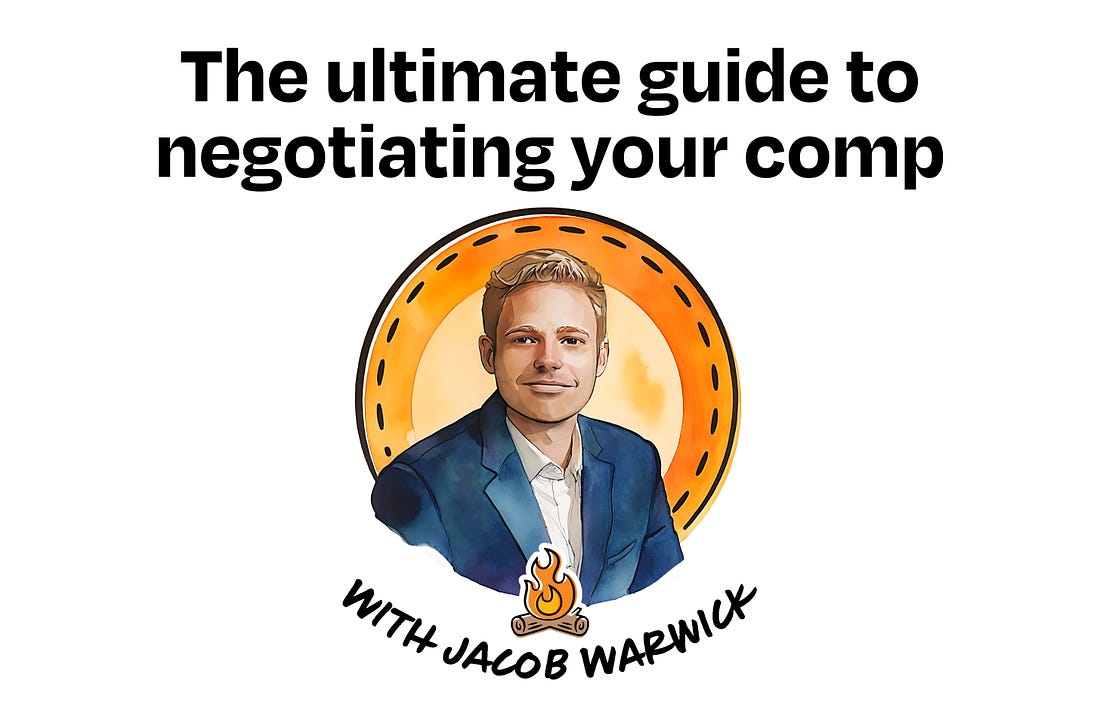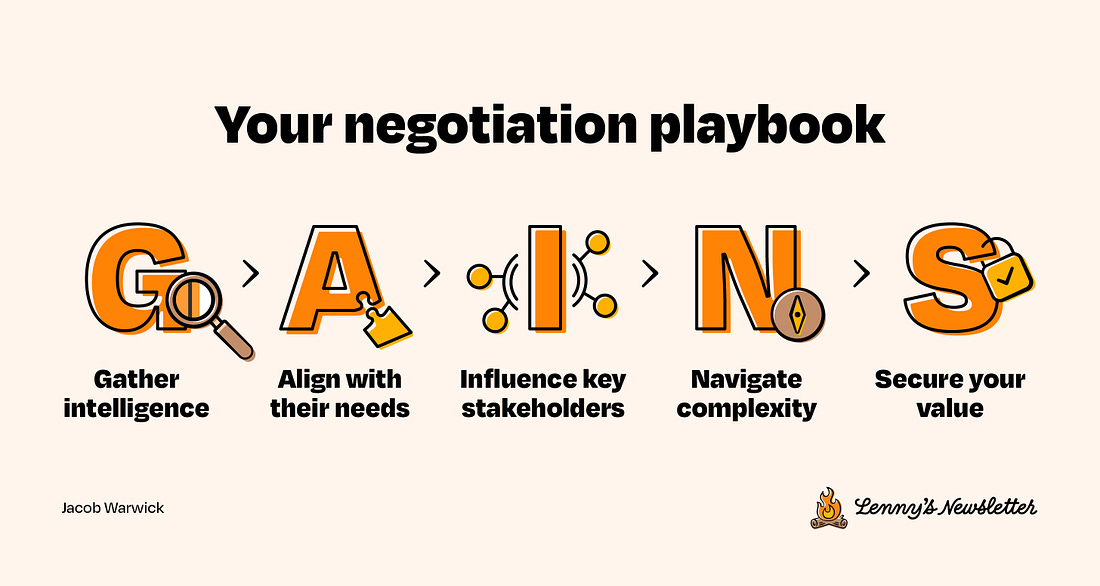|
The ultimate guide to negotiating your comp
The step-by-step guide that’s helped hundreds of leaders secure life-changing compensation
👋 Welcome to a 🔒 subscriber-only edition 🔒 of my weekly newsletter. Each week I tackle reader questions about building product, driving growth, and accelerating your career. For more: Lenny’s Podcast | How I AI | Lennybot | Lenny’s Reads | Courses | Swag
Annual subscribers now get a free year of Perplexity Pro, Notion, Superhuman, Linear, Granola, and more. Subscribe now.
I’m excited to share the most practical and specific guide to negotiating comp that I’ve ever seen. This approach is targeted at leaders (e.g., senior ICs and managers), but no matter your role, anyone can benefit from this incredibly pragmatic, direct, and practical collection of tactics and advice.
A bunch of my trusted friends have been raving about Jacob Warwick, a full-time negotiation coach for executives. Over the last 10+ years, he’s guided more than 3,500 senior leaders through high-stakes comp negotiations. This post is a synthesis of everything he’s learned over the past 15 years. You won’t find anything like this elsewhere.
For more from Jacob, check out his free LinkedIn profile analysis tool, which just went live on Product Hunt today, his interview preparation report service, and his individual consulting services at ThinkWarwick Global. You can also find him on LinkedIn and X.
P.S. If you prefer, you can listen to this post in podcast form: Spotify / Apple / YouTube
Two equally qualified product leaders walk into the same negotiation. One leaves with a standard package—market-rate base salary, typical equity, standard benefits. The other walks away with double the compensation, accelerated vesting schedules, and a signing bonus that covers their mortgage for a year.
The difference isn’t skill, experience, or even negotiation tactics. It’s a fundamental shift in approach. As a product leader, you already understand that successful products solve important problems for people, create emotional connection with their users, and meet real market needs. Exceptional negotiation works the same way.
While most candidates ask, “What can you offer me?,” top earners demonstrate “Here’s how I’ll solve your most pressing challenges and create new possibilities for your business.”
Demonstrating unmistakable value for the company you’re interviewing with, and building relationships with the people who matter, will create opportunities others never see and transform your compensation trajectory.
This shift isn’t semantic—it fundamentally transforms how decision-makers perceive your value. When you make them feel confident, inspired, and excited about the future you’ll build together, compensation becomes a natural reflection of that value, not a negotiation point.
Recently, I guided a Senior PM whose offer started with an advertised range of $185K-$285K. After our targeted interview and negotiation strategy, they walked away with a staggering $1.1M annual package—nearly four times the upper limit. This isn’t an isolated success. I’ve helped hundreds of leaders dramatically increase their compensation by refusing to accept published salary ranges as the final word.
I’ll show you exactly how they do it.
Your negotiation playbook
Every successful negotiation starts with leverage. Whether you’re planning six months ahead or sitting in discussions right now, here’s the process I’ve developed through trial and error with clients over 15 years.
G: Gather intelligence. Go beyond the obvious. Dig into the company’s real challenges, understand who truly makes decisions (hint: it’s not always on the org chart), and know their market better than they do.
A: Align with their needs. Stop selling your resume. Start demonstrating how you’ll solve their specific problems for the company/team. When you position yourself as the solution to their challenges—not just another candidate—the power dynamic shifts immediately.
I: Influence key stakeholders. Create champions throughout the organization, not just with the hiring manager. Show each stakeholder how you’ll make their world better, and they’ll fight for your compensation later.
N: Navigate complexity. Master the delicate dance of pushing for what you’re worth without creating tension. Know exactly when to advance discussions and when to build relationships. Timing is everything.
S: Secure your value. Get agreements right, start delivering value before day one, and build the foundation for your long-term success.
Let’s break down exactly how to execute each step with real examples from leaders I’ve worked with who have used this approach to dramatically increase their compensation.
G: Gather intelligence that others miss
The most valuable information won’t show up in press releases or job descriptions. To build real leverage, spend time on three key intelligence domains:

